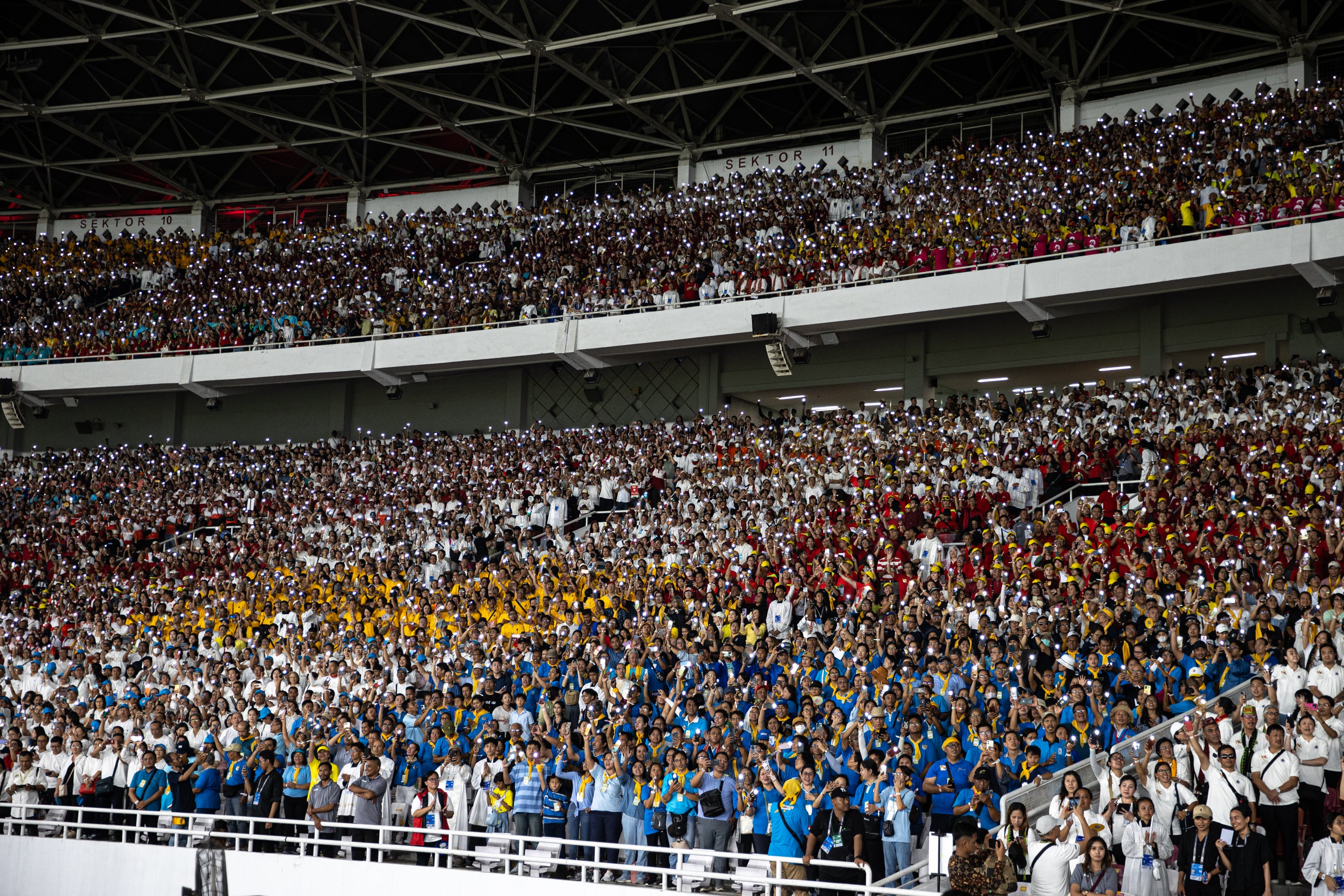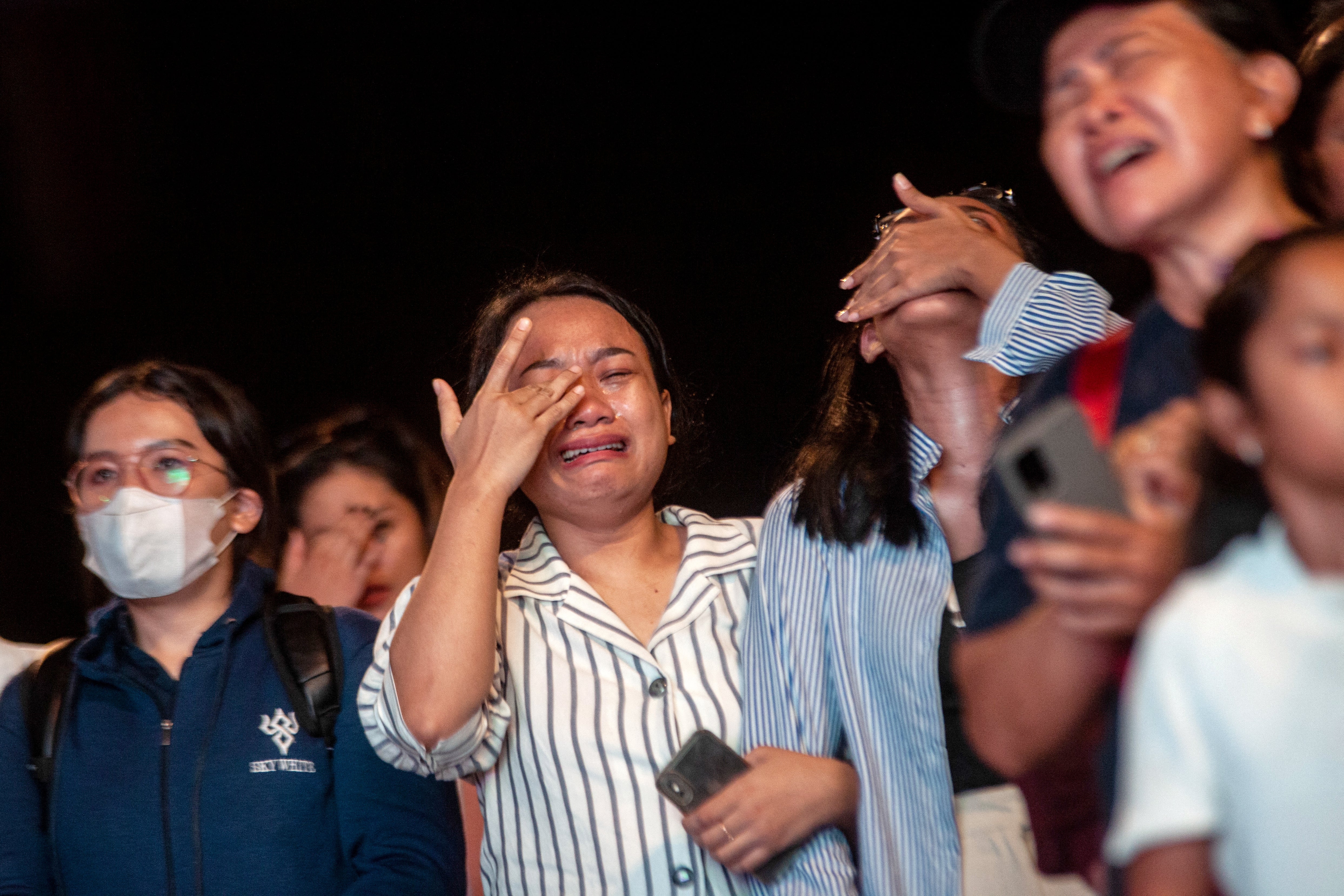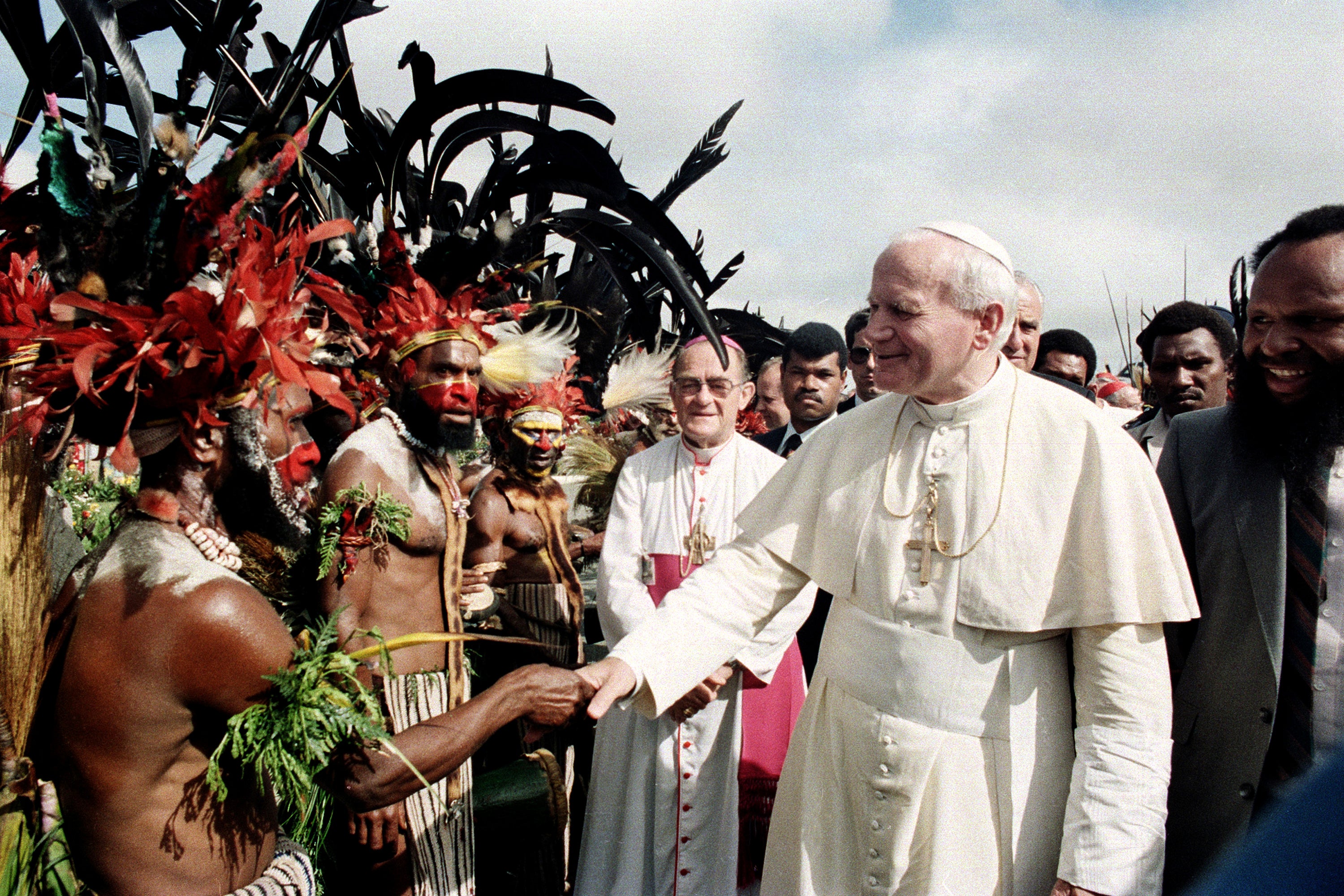Huge crowd of 100,000 attends Pope Francis’s last mass in Indonesia before he heads to Papua New Guinea
Pope was given a custom-made tactical vehicle for the grand Mass, specially designed for his mobility needs
Your support helps us to tell the story
From reproductive rights to climate change to Big Tech, The Independent is on the ground when the story is developing. Whether it's investigating the financials of Elon Musk's pro-Trump PAC or producing our latest documentary, 'The A Word', which shines a light on the American women fighting for reproductive rights, we know how important it is to parse out the facts from the messaging.
At such a critical moment in US history, we need reporters on the ground. Your donation allows us to keep sending journalists to speak to both sides of the story.
The Independent is trusted by Americans across the entire political spectrum. And unlike many other quality news outlets, we choose not to lock Americans out of our reporting and analysis with paywalls. We believe quality journalism should be available to everyone, paid for by those who can afford it.
Your support makes all the difference.An unexpectedly large crowd of some 100,000 people crammed into two sports stadiums and the surrounding car park on Thursday to witness the final Mass led by Pope Francis in Indonesia before he departed for Papua New Guinea, one of the highlights of his 11-day Asia tour.
A sea of people – thousands more than expected – gathered to take part in the grand Mass, which spanned across two stadiums typically only filled by the likes of rockstars and presidents in the predominantly Muslim country.
It was a fitting finale to the 87-year-old pope’s four-day tour of Indonesia, the first stop on an ambitious trip through Southeast Asia and Oceania – the longest and furthest trip of his papacy, undertaken despite his myriad health challenges.
Following the farewell ceremony on Friday, the pope took a six-hour flight to Port Moresby in Papua New Guinea, but otherwise had no official engagements in his diary for the day, giving him a short break after a packed programme in Jakarta.
The Vatican had originally expected the Mass to draw some 60,000 people, and organisers predicted 80,000. But the Vatican spokesperson quoted local organisers as saying more than 100,000 had attended.
Pictures showed Catholic nuns wearing their habits, students and the elderly filling up the stadium while many became overwhelmed with emotions and were seen crying. The pope waves from his car towards the worshippers.


“Don’t tire of dreaming and of building a civilization of peace,” Francis urged them in an ad-libbed homily. “Be builders of hope. Be builders of peace.”
While in Indonesia, Francis sought to encourage the country’s 8.9 million Catholics, who make up just 3 per cent of the population of 275 million, while also seeking to boost interfaith ties with the country boasting the world’s largest Muslim population.
"I feel very lucky compared to other people who can’t come here or even had the intention to come here," said Vienna Frances Florensius Basol, who came with her husband and a group of 40 people from Sabah, Malaysia, but couldn't get into the stadium.
“Even though we are outside with other Indonesians, seeing the screen, I think I am lucky enough,” she said from a parking lot where a giant TV screen was erected for anyone who didn't have tickets for the service.
“The Pope‘s presence is like Jesus’ presence,” a transgender woman Mami Yuli, wearing a sparkly dress and feathered headress, one of the thousands of Indonesian Christians who gathered to hear the Pope‘s rousing homily told Reuters.
“Given his important message of tolerance, we hope the church and the people can judge us positively,” she added, speaking of the group that faces discrimination from religious conservatives.


“We endure a lot of pressure and that limits our movement as transwomen in Indonesia.”
In the highlight of the visit, Francis and the grand imam of Jakarta’s Istiqlal Mosque, Southeast Asia’s largest, signed a joint declaration pledging to work to end religiously inspired violence and protect the environment.
The pope who opted to travel in the Vatican embassy’s Innova car was given a custom-made bulletproof tactical vehicle with a detachable roof for the Mass. The open-roof car was customised to the pope’s mobility needs, with the addition of a folding ladder, the rear step for the Pope’s guard and the roof for protection from rain.
In Papua New Guinea, Francis’ agenda is aligned with more of his social justice priorities and will visit a remote part of the South Pacific island nation where Christianity is a recent addition to traditional spiritual beliefs developed over millennia.
In the country of 10 million people, most of whom are subsistence farmers and trappings of modernity are scarce.
There is no running water for the more than 120,000 people who live in the diocese, according to a church website. Electricity is a luxury for the few who can afford solar panels or portable generators.
John Lavu, the choir conductor at St Charles Luwanga parish in the capital, Port Moresby, said the visit would help him grow stronger in his Catholic faith.


"I have lived this faith all my life, but the coming of the Holy Father, the head of the church, to Papua New Guinea and to be a witness of his coming to us is going to be very important for me in my life as a Catholic,” he said on the eve of Francis' arrival.
Francis will be traveling to remote Vanimo to check in on some Catholic missionaries from his native Argentina who are trying to spread the Catholic faith to a largely tribal people who also practice pagan and Indigenous traditions.
However, the poor nation is strategically important in the Pacific region.
The country, the South Pacific’s most populous after Australia, has more than 800 Indigenous languages and has been riven by tribal conflicts over land for centuries, with conflicts becoming more and more lethal in recent decades.
History's first Latin American pope will likely refer to the need to find harmony among tribal groups while visiting, the Vatican said. Another possible theme is the country’s fragile ecosystem, its rich natural resources at risk of exploitation and the threat posed by climate change.


The Papua New Guinean government has blamed extraordinary rainfall for a massive landslide in May that buried a village in Enga province.
The government said more than 2,000 people were killed, while the United Nations estimated the death toll at 670.
Francis becomes only the second pope to visit Papua New Guinea, after St John Paul II touched down in 1984 during one of his lengthy, globetrotting voyages.
Then, John Paul paid tribute to the Catholic missionaries who had already been trying for a century to bring the faith to the country.

Papua New Guinea is a Commonwealth nation that was a colony of nearby Australia until independence in 1975.
In the longest and farthest voyage of his papacy, Francis will also visit East Timor and Singapore before returning to the Vatican on 13 September.
Additional reporting by AP
